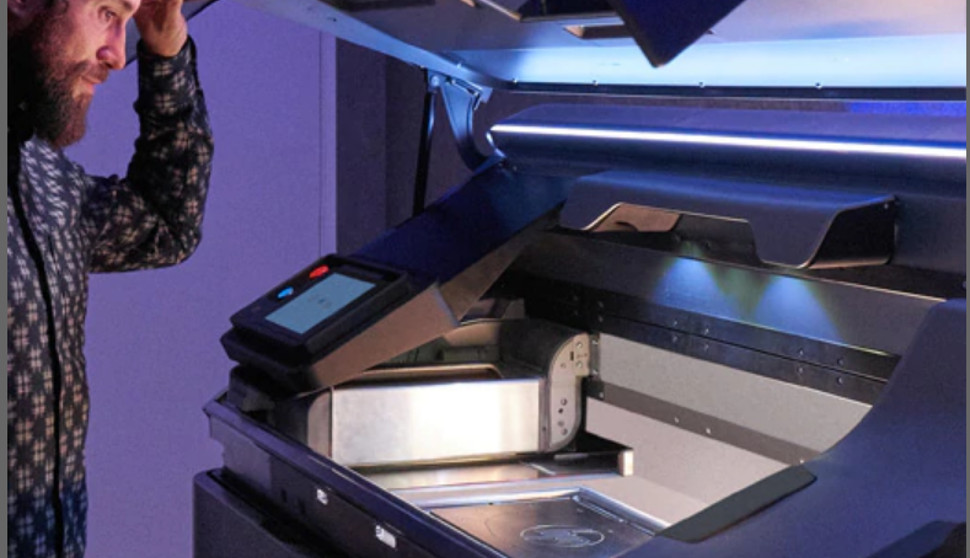How can the UK stay ahead of the digital manufacturing curve?
We speak to HP's George Brasher to find out more on the future of 3D printing.

Does the hype around 3D printing really live up to the reality?
Absolutely. 3D printing is changing everything we know about industrial production: how we conceive, design, make and consume just about every product on earth. It’s turning the world’s $12-trillion manufacturing industry on its head.
But isn’t it best suited to niche production?
3D printing is really a misnomer – it’s short run manufacturing, and it’s already being used in large-scale, customised production.
Let me give you a couple of examples. Digital production technology is being deployed to improve the performance of steel used in buildings like The Shard. Elsewhere, the Royal Navy has used it produce a drone, capable of operating in the extreme climate of the Antarctic. That’s something traditional manufacturing methods can’t produce. And yet the Navy’s model was still cheaper than those made by conventional means.
So what are the benefits of 3D printing?
There are many. Some of them are evident in the examples I just described: it outputs cheaper, better-performing and more robust materials and products.
But there’s a much bigger picture. 3D printing is bringing about a new manufacturing revolution. Because it is done on-demand, it’s moving us from mass production to mass-customisation. At the same time, it is speeding up the design, innovation and production cycle; it enables firms to go from to design through prototyping to production in less than a week. All while reducing costs, and driving shorter, more flexible supply chains.
It’s also improving the sustainability of manufacturing, as it enables on-the-spot production, diminishing the need to ship goods around the world. A recent study by HP and A.T. Kearney found that it could cut CO2 emissions by as much as 525 million tonnes by 2025.
How far forward are we in the UK when it comes to embracing 3D printing?
There’s good news on that front. I genuinely believe that Britain’s digital production sector can be a leader in the new global manufacturing order.
Sign up to the TechRadar Pro newsletter to get all the top news, opinion, features and guidance your business needs to succeed!
The HP / AT Kearney report I mentioned puts Britain among the top five countries globally for our readiness for 3D printing. Having studied 30 leading economies, we found the UK to be second-best placed in Europe, behind only Germany.
The results also hint that our competitiveness could get better still, as Britain currently boasts the world’s third fastest-growing 3D printing market.
And on the downside?
There are of course issues that must be addressed.
Our research ranks the UK workforce outside of the world’s top ten nations for the digital manufacturing capabilities that will be essential if 3D printing is to flourish.
Maintaining our early competitive edge will demand a strong focus at national level. Worryingly, the UK’s current industrial strategy contains just one brief reference to ‘additive manufacturing’ (another term for 3D printing).
What can government be expected to do?
Policymakers should focus their attention on three crucial pillars to bring about the conditions that will allow digital production to thrive in Britain.
Government must help accelerate the adoption of 3D printing; incentivise the development of a 3D-printing ecosystem across the UK; and encourage investment in the right skills and technology.
How do you envisage government achieving these aims?
Firstly, it can speed up adoption in a number of ways. By playing the role of early adopter through its procurement. By supporting the uptake of digital production technology among small firms. And by removing trade barriers on 3D printers and materials.
Secondly, it can nurture the necessary ecosystem via grants and tax breaks for investment in digital manufacturing capabilities.
And thirdly, it can encourage large scale investment in university-level research to advance digital manufacturing technology; and in educational programmes to train the digital workforce that will be required in the future.
But that’s presumably not all down to the government. What can industry do?
Correct. The country’s nascent 3D-printing ecosystem must also play its part. Designers, manufacturers, researchers, device-makers and educators must come together to facilitate access to digital manufacturing technology.
HP is part of that ecosystem. What is your organisation doing to support the 3D printing industry?
In terms of making the technology available, we’ve launched our Multi Jet Fusion 3D printing solutions. These offer ten times the production speeds, at 50% of the materials costs, compared to existing 3D-printing technology – advancing the ROI case for next-generation production.
And on the ecosystem front, HP has joined forces with more than 50 leading companies to create an open-materials innovation platform. This will help companies to develop, test, certify and deliver materials and applications for 3D printing.
So what is the future for 3D printing in the UK?
3D printing is the future of manufacturing. It is an integral part of the fourth industrial revolution. It is changing the global production paradigm, promising many powerful benefits.
Here in the UK, we have a one-off opportunity to take a lead in the digital manufacturing race, as long as we put the building blocks in place. Our standing in the digital future is at stake.
George Brasher is managing director, HP UK&I.
George Brasher is the UK Managing Director at HP. He has over 25 years of working experience. . He is thoughtful, creative and steady handed. Despite the challenges, George has always displayed a willingness to understand all possible options to deliver the best outcome
